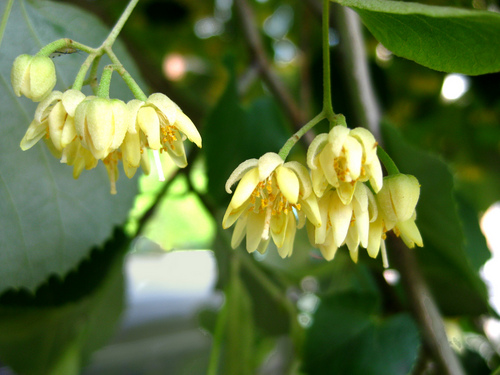American Basswood : Natural History
It might seem like a daunting task to try to find a specific tree, but with a little practice you will be able to identify an American Basswood in no time. To start you must go to an area of North America where the American Basswood grows. Try the northeastern parts of the United States and the Southern parts of Canada, including Ontario, Quebec, and New Brunswick. When you are identifying an American Basswood remember that you are looking for a rather large tree. American Basswoods can grow to be about 40 feet wide and 60-80 feet tall, which is about 5 stories tall! The biggest American Basswood in the U.S. is 96 feet tall and is located in the Lexington Cemetery in Kentucky, behind the monument of Henry Clay's grave.
The leaves of the American Basswood are great clues to use to help with identifying. One unique aspect of Basswood leaves is that their shape resembles that of a heart. The leaves are about 5 to 6 inches in length and width and they are simple, alternate leaves. This means that each leaf only has one blade that connects to a twig, as opposed to many leaflets. Alternate describes the arrangement of the leaves on the twig and it means that the blades do not grow opposite each other at the same location, and instead alternate positions on either side of the twig. The bases of the leaves are oblique, or unequal, and the edges of the leaves are serrated with long-pointed teeth. American Basswoods have larger leaves than any of the other species of Basswood, so leaf size can be a good way to distinguish between different types of Basswoods.
Since Basswoods are deciduous trees, they lose their leaves every winter, so you can only rely on the leaves during the warmer months. There are other parts of the tree though, that you can use that are distinctive of the American Basswood. The flowers of the American Basswood are creamy-white to pale-yellow in color and they are very fragrant. Flowers begin to appear on Basswoods when they are almost or completely full grown. The flowers grow in groups of 3-7 on a green-yellow bract. The bracts are located underneath the leaves and they are a form of modified leaves. At the end of the bracts the flowers grow in clusters called a cyme. In the fall the propeller- like blades, which sit in the middle of the bract, detach from the upper half of the bract and transport the seeds.
American Basswoods also have nuts, which are about ¼ of an inch in length, about the size of a pea. The bark of a Basswood is gray to brown and is broken into many narrow ridges. It can be hard to identify an American Basswood based on its bark, because it is variable depending on the tree’s age. For the first 20 years or so the bark on Basswoods remain relatively smooth, but over time it becomes rougher.


